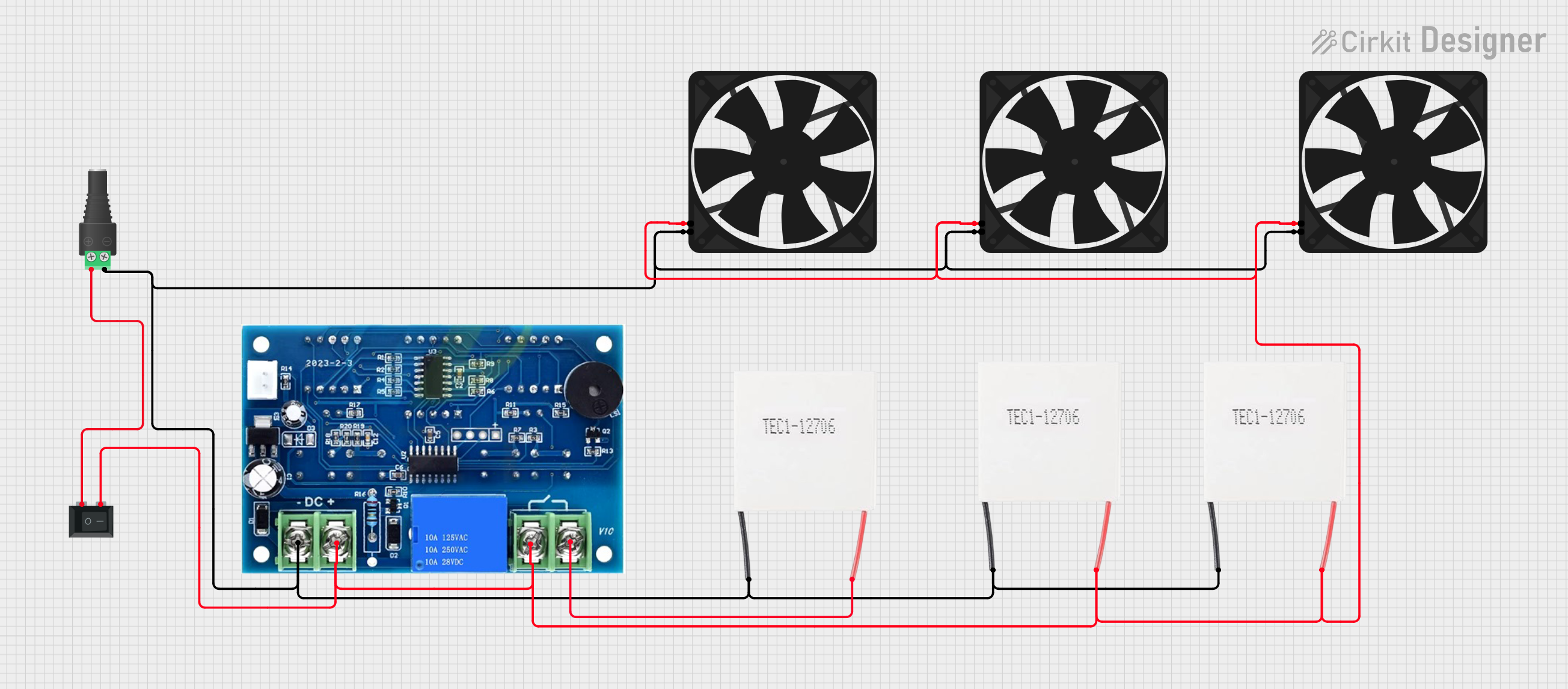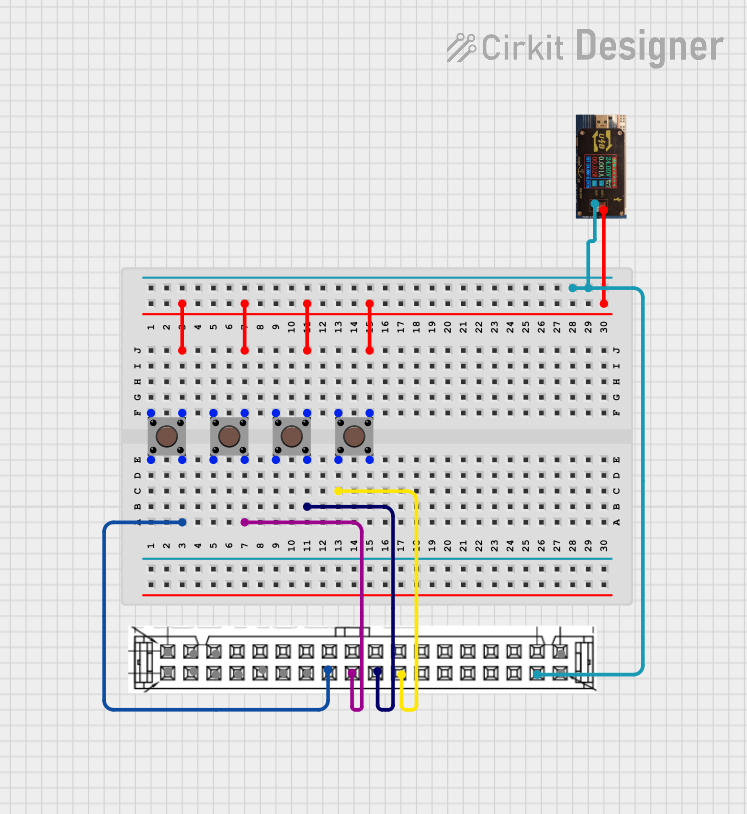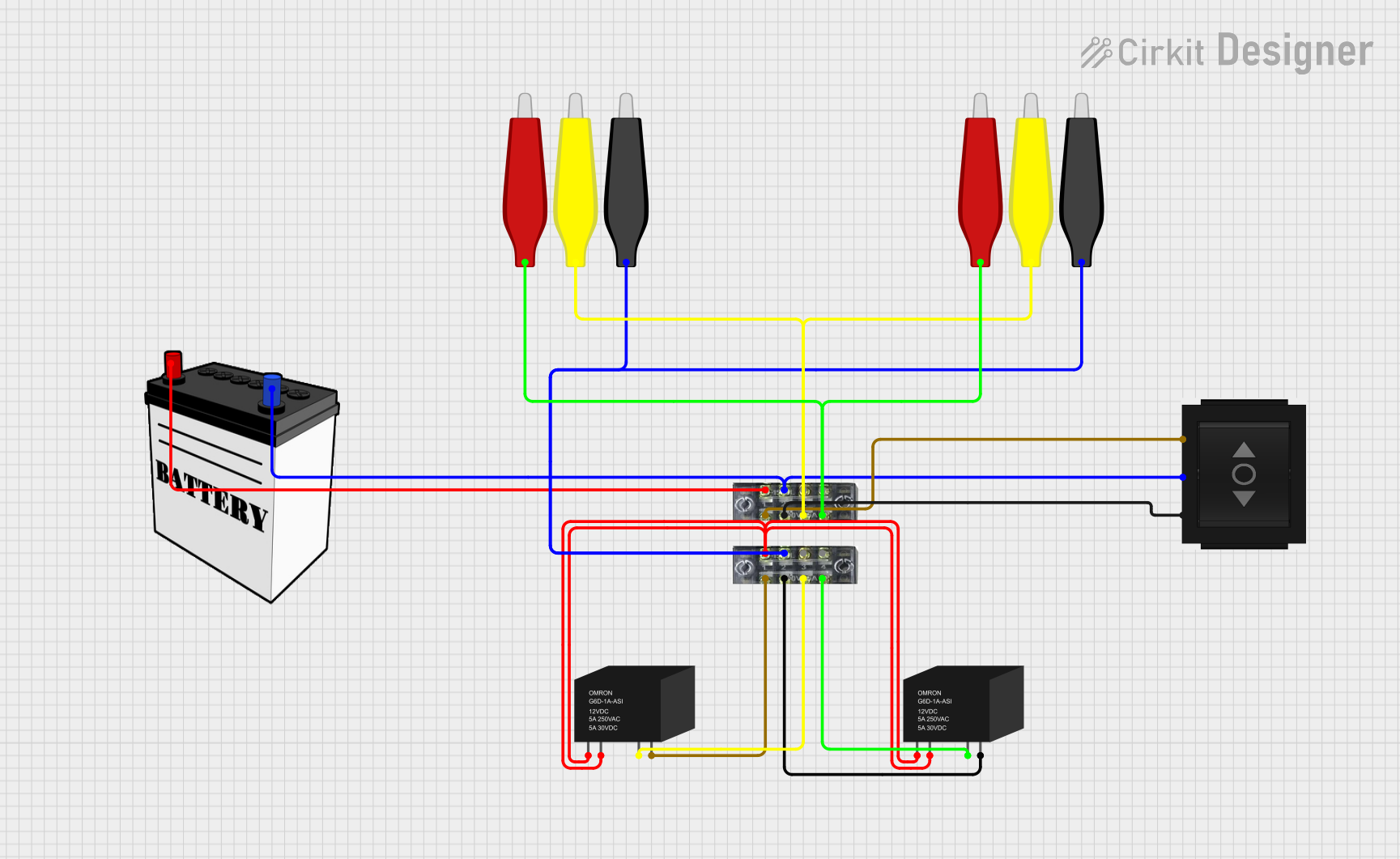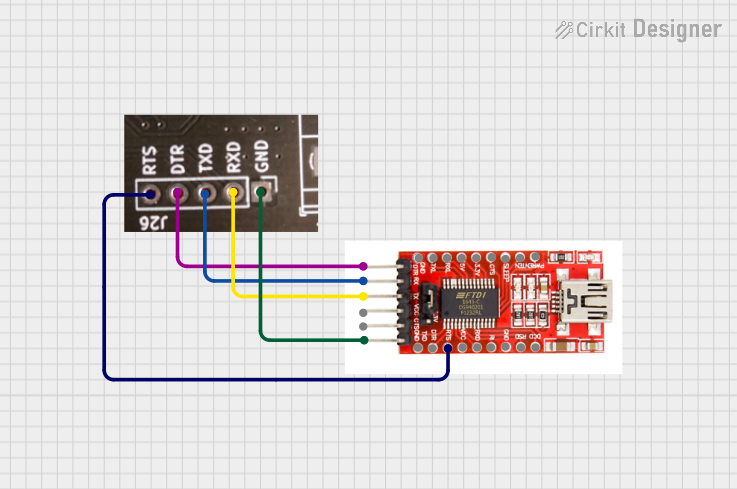
How to Use Terminal Block (Connector): Examples, Pinouts, and Specs

 Design with Terminal Block (Connector) in Cirkit Designer
Design with Terminal Block (Connector) in Cirkit DesignerIntroduction
A terminal block is a modular, insulated block designed to secure two or more wires together. It provides a convenient and reliable way to connect and disconnect electrical circuits without the need for soldering. Terminal blocks are widely used in industrial, commercial, and residential applications due to their ease of use, durability, and ability to handle high currents.
Explore Projects Built with Terminal Block (Connector)

 Open Project in Cirkit Designer
Open Project in Cirkit Designer
 Open Project in Cirkit Designer
Open Project in Cirkit Designer
 Open Project in Cirkit Designer
Open Project in Cirkit Designer
 Open Project in Cirkit Designer
Open Project in Cirkit DesignerExplore Projects Built with Terminal Block (Connector)

 Open Project in Cirkit Designer
Open Project in Cirkit Designer
 Open Project in Cirkit Designer
Open Project in Cirkit Designer
 Open Project in Cirkit Designer
Open Project in Cirkit Designer
 Open Project in Cirkit Designer
Open Project in Cirkit DesignerCommon Applications and Use Cases
- Industrial Control Panels: Used to connect sensors, actuators, and power supplies.
- Power Distribution: Facilitates the distribution of electrical power in machinery and equipment.
- PCB Connections: Provides a secure interface for connecting external wires to printed circuit boards.
- Home Automation: Used in smart home systems for connecting various devices.
- Test and Measurement Equipment: Allows for quick and temporary connections during testing.
Technical Specifications
Key Technical Details
- Voltage Rating: Typically ranges from 250V to 1000V, depending on the model.
- Current Rating: Commonly supports 10A to 125A.
- Wire Gauge Compatibility: Accepts wires ranging from 22 AWG to 2 AWG.
- Insulation Material: Made from flame-retardant materials such as polyamide or thermoplastics.
- Mounting Options: Available in DIN rail, panel mount, or PCB mount configurations.
- Number of Terminals: Varies from 2 to 24 or more, depending on the application.
Pin Configuration and Descriptions
Terminal blocks do not have "pins" in the traditional sense but instead feature screw or spring-clamp terminals. Below is a table describing the key parts of a typical terminal block:
| Part Name | Description |
|---|---|
| Terminal Screw | Secures the wire in place by tightening it against the conductive metal strip. |
| Conductive Strip | Provides the electrical connection between wires. |
| Insulation Housing | Encases the conductive parts to prevent short circuits and ensure safety. |
| Wire Entry Point | The opening where the wire is inserted into the terminal block. |
| Mounting Mechanism | Allows the terminal block to be attached to a DIN rail, PCB, or panel. |
Usage Instructions
How to Use the Component in a Circuit
Select the Appropriate Terminal Block:
- Choose a terminal block that matches the voltage, current, and wire gauge requirements of your circuit.
- Ensure the mounting type (DIN rail, PCB, or panel) is suitable for your application.
Prepare the Wires:
- Strip the insulation from the wire ends, leaving about 5-10mm of exposed conductor.
- Ensure the wire ends are clean and free of frayed strands.
Insert the Wires:
- Loosen the terminal screw or open the spring clamp.
- Insert the stripped wire end into the wire entry point.
- Tighten the screw or release the spring clamp to secure the wire.
Verify the Connection:
- Gently tug on the wire to ensure it is firmly secured.
- Check for any exposed conductor outside the terminal block to avoid short circuits.
Connect the Circuit:
- Repeat the process for all wires, ensuring proper polarity and connections.
Important Considerations and Best Practices
- Avoid Over-Tightening: Over-tightening the terminal screw can damage the wire or the terminal block.
- Use Ferrules for Stranded Wires: Ferrules prevent fraying and improve the connection for stranded wires.
- Check for Compatibility: Ensure the terminal block's voltage and current ratings match your circuit requirements.
- Inspect Regularly: Periodically check the connections for signs of wear, corrosion, or loosening.
Example: Connecting a Terminal Block to an Arduino UNO
Terminal blocks can be used to connect external components, such as sensors or motors, to an Arduino UNO. Below is an example of wiring a terminal block to control an LED:
Circuit Description
- The terminal block connects the Arduino's digital output pin to an LED and a resistor.
Code Example
// Arduino code to blink an LED connected via a terminal block
const int ledPin = 8; // Digital pin connected to the terminal block
void setup() {
pinMode(ledPin, OUTPUT); // Set the pin as an output
}
void loop() {
digitalWrite(ledPin, HIGH); // Turn the LED on
delay(1000); // Wait for 1 second
digitalWrite(ledPin, LOW); // Turn the LED off
delay(1000); // Wait for 1 second
}
Troubleshooting and FAQs
Common Issues and Solutions
Loose Connections:
- Issue: The wire slips out of the terminal block.
- Solution: Ensure the terminal screw is tightened securely. For stranded wires, use ferrules.
Overheating:
- Issue: The terminal block becomes hot during operation.
- Solution: Verify that the current does not exceed the terminal block's rating. Check for loose connections.
Corrosion:
- Issue: The conductive strip shows signs of rust or corrosion.
- Solution: Use terminal blocks with corrosion-resistant materials, such as tin-plated copper.
Wire Damage:
- Issue: The wire is damaged or frayed near the connection point.
- Solution: Strip the wire again and ensure proper insertion. Avoid over-tightening the screw.
FAQs
Q: Can I use a terminal block for high-frequency signals?
A: Terminal blocks are generally not ideal for high-frequency signals due to potential signal degradation. Use specialized connectors for such applications.Q: Are terminal blocks reusable?
A: Yes, terminal blocks can be reused as long as they are not damaged or worn out.Q: Can I connect multiple wires to a single terminal?
A: It is not recommended unless the terminal block is specifically designed for multiple wire connections.Q: How do I choose the right terminal block for my project?
A: Consider the voltage, current, wire gauge, and mounting requirements of your application.